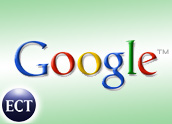
Google is raising eyebrows by probing for opportunities outside the digital world for the first time ever, announcing it would conduct a test of a program to re-sell print advertising space to customers of its online marketing programs.
Google has purchased space in next week’s issues of PC Magazine and Maximum PC magazine with the intention of re-selling that space to its online customers. The move marks the first time that Google ads will appear anywhere but online.
Brokering Deals
Google described the effort as a “limited test,” with a spokesman describing it as part of the search giant’s “continuing effort to develop new ways to provide effective and useful advertising to advertisers, publishers and users.”
Re-selling print ads in a bundle that could include various online ads — paid search listings and contextual ads, for instance — would put Google in the position of becoming an advertising broker. Most marketers now buy ads directly from print publications rather than working through brokers.
Speculation in the advertising industry was that Google may experiment with various payment options for the print space, possibly auctioning it off the way it lets marketers bid on keyword placements or attempting to translate the pay-per-click-through model that works well online by pricing ads based on the number of visits to a certain Web URL or calls to a specific phone number they generate.
Some observers noted that the system may help smaller advertisers get prominent space in the magazines that they could otherwise not afford, since smaller ads are typically not inserted into the main part of consumer magazines but relegated to classified sections at the back. The Google scheme would let advertisers buy a fraction of a full page but still get placement as they would with a full-page advertisement.
Logical Step
The ads reportedly do not include the Google logo, but a fine-print note saying that they are from Google advertisers and the words “ads by Google.”
Search Engine Watch editor Danny Sullivan said the move makes sense.
“Not only doesn’t the move surprise me, but I personally expect we’ll see more of it,” Sullivan said. “There’s no reason why Google or Yahoo can’t move some of their advertisers into the print world.
Given their roles as information aggregators, Sullivan added: “I’m still expecting we’ll see something like a print yellow pages from one or both of these major players.”
In recent quarters, Google has said that one of the factors limiting its advertising revenue growth is the limited availability of space on which to display advertising, especially those that are text-based. Because Google typically deploys only three to four paid ads for each page through its contextual placement program, even the growth of blogs and niche sites may not be enough to meet the demand for those ads.
Leg Up for Little Guy
Print ads would help Google diversify its revenue stream, something that a few analysts have begun to call for, and also would make a logical fit with an expanded display ad effort, which Google has begun to roll out to go with its text ads that appear alongside search results and inserted into Web pages.
However, Piper Jaffray analyst Safa Raschtchy said, the test was likely just that — an experiment — and said that it would be surprising if Google was to invest revenues in an off-line advertising effort, which seems to be well outside its core areas and off the beaten path from its many efforts to build traffic and loyalty as a search engine-turned-portal.
The big winners may be the smaller firms that work with Google. While larger companies likely already have relationships established with magazine and newspaper publishers, the offering might appeal to smaller companies looking to extend their brand-building efforts beyond the Internet.
























































Social Media
See all Social Media